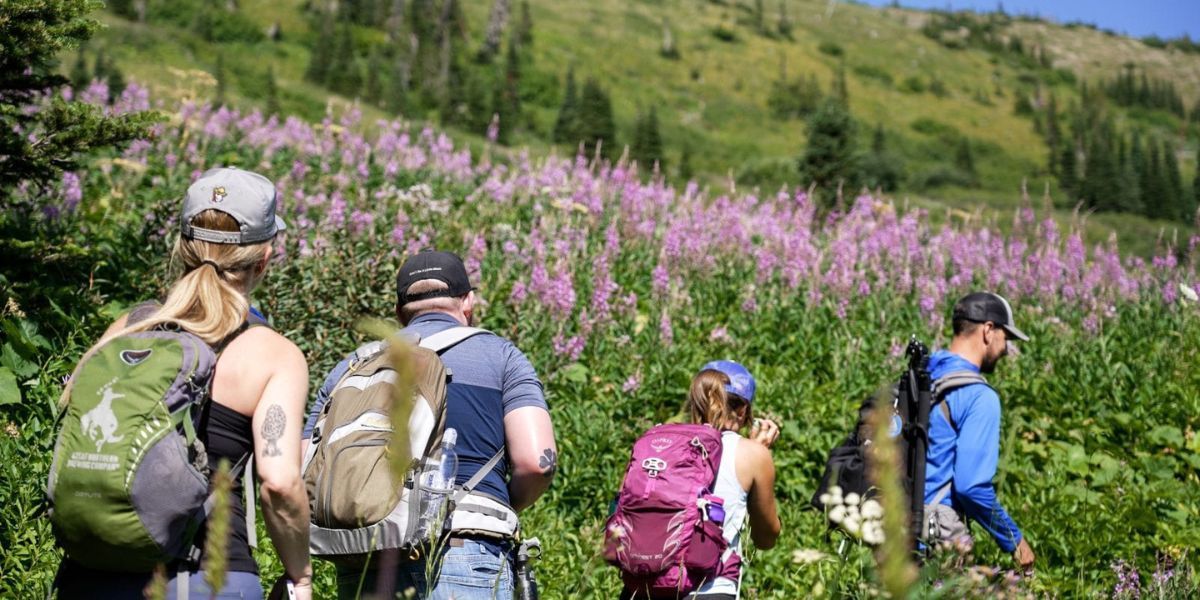The Ultimate Day Hiking Checklist
June 12, 2024
Essential Gear and Tips for a Safe and Enjoyable Hike
If you love spending time outdoors and exploring nature, then there’s nothing quite like a good day hike. Whether you’re hitting the trails with friends, family, or going solo, it’s important to be prepared for whatever the wilderness might throw at you. A successful day hike isn’t just about picking a beautiful trail—it’s about having the right gear and being ready for all conditions.
To make sure your next day hike is as enjoyable and safe as possible, we’ve put together the ultimate day hiking checklist. From the best clothing choices and essential gear to important safety precautions and handy tips, this guide covers everything you need to know. With our comprehensive checklist, you’ll be well-equipped to handle any adventure that comes your way, ensuring a memorable and worry-free outdoor experience.

To make sure your next day hike is as enjoyable as possible, we've put together the ultimate day hiking checklist. From what to wear and what to bring to essential safety precautions, we've got you covered.
Clothing
First and foremost, choose clothing that is comfortable and suitable for the weather conditions. Consider wearing moisture-wicking fabrics that will keep you dry and comfortable throughout your hike. Layers are key – this way you can adjust according to temperature changes throughout the day. Don't forget a hat and sunglasses for sun protection.
Footwear
Investing in a good pair of hiking boots or shoes is crucial for any hiker. Make sure they are broken in and provide good ankle support. Also consider bringing extra socks in case of wet conditions.
Backpack
A proper backpack will carry all of your essentials comfortably on your back while leaving your hands free. Look for one that has adjustable straps, multiple compartments, and fits snugly without being too tight.
Water
Staying hydrated during a hike is absolutely essential. Make sure to bring enough water for the duration of your trip – at least 2 liters per person if not more depending on length of hike or weather conditions.
Food
Pack plenty of high-energy snacks such as trail mix, granola bars or fruit that will keep you fueled throughout the day.
Navigation tools
Even if you know the trail like the back of your hand it's always smart to have a map (and know how to read it) handy just in case something goes wrong with technology (GPS). A compass can also come in handy if things go south when navigating out on an unfamiliar route.
First-aid kit
Accidents happen so having basic first-aid items such as band-aids, gauze pads antiseptic wipes sunscreen anti-histamines etc., can be invaluable over longer hikes where help may not be immediately available.
Emergency supplies
It’s always best practice to be prepared should an emergency arise; items such as matches/lighter whistle flashlight extra batteries multi-tool duct tape emergency blanket etc., are very useful especially when staying out past dark.
Sun protection /Bug spray
Depending on location featuring dense tree cover or open fields, sun protection and bug spray may be necessary. Don't forget to apply sunscreen before you hit the trail and bring a good quality bug spray to keep those pesky insects at bay.
Extra Clothing/Protection
Even on warm days, it's always smart to bring an extra layer of clothing in case temperatures drop unexpectedly or if you get wet. A lightweight rain jacket is also a must-have for any hiker as weather conditions can change quickly.
Communication devices
While it's nice to disconnect from technology during a hike, having some form of communication can be crucial in case of emergencies. Consider bringing a fully charged cellphone or even better, a satellite communication device for more remote areas.
Personal Identification/Contact Information
It's always wise to have your personal identification with you just in case something happens. Also, make sure to leave your hiking itinerary with someone reliable so they know where you'll be and when they should expect you back.
Camera
Capture the memories and beauty of nature by bringing along your camera. Whether it's a fancy DSLR or simply your smartphone, having something to document your adventure will help preserve those special moments.
Leave No Trace Principles
Lastly but most importantly, follow the Leave No Trace principles. Respect nature and leave everything as you found it so that future generations can enjoy the beauty too. Pack out all trash and dispose of waste properly, stay on designated trails, and avoid disturbing wildlife.
Now that you have the ultimate day hiking checklist at hand, you're well-prepared to embark on your next outdoor adventure with confidence. Remember, the key to a successful and enjoyable hike lies in thorough preparation and having the right gear. Each item on this checklist plays a crucial role in ensuring your comfort, safety, and overall experience.
When it comes to clothing, layering and choosing the right fabrics can make a significant difference in adapting to changing weather conditions. Good footwear will provide the support and comfort needed to tackle various terrains, while a well-fitted backpack ensures that you can carry your essentials without straining your back.
Hydration and nutrition are vital, so always pack enough water and high-energy snacks to keep your energy levels up.
Navigation tools and a first-aid kit are indispensable for handling unexpected situations, ensuring that you stay on the right path and can address minor injuries promptly. Emergency supplies, sun protection, and bug spray are additional layers of preparation that can enhance your comfort and safety. Extra clothing and communication devices ensure you're ready for any weather changes or emergencies, while personal identification provides peace of mind in case of unforeseen circumstances. And don't forget to capture the memories with your camera while adhering to Leave No Trace principles to preserve nature's beauty for future generations.
With all these preparations in place, you're ready to lace up your
boots, hit the trail, and immerse yourself in the wonders of nature. Whether you're exploring a familiar path or venturing into new territory, being well-equipped and prepared will help you make the most of your hiking experience. So grab your gear, invite your friends or enjoy some solo time, and set out on an unforgettable journey through the great outdoors. Happy hiking!
What are the most important items to bring on a day hike?
The essentials for a day hike include a backpack, water, snacks, appropriate clothing for the weather (layering is key), sturdy footwear, a map and compass or GPS, a first aid kit, and sun protection. Additional useful items might include a knife or multi-tool, a headlamp or flashlight, and an emergency shelter or space blanket.
How much water should I carry on a day hike?
The amount of water to carry depends on various factors including the length of the hike, the weather, and your personal hydration needs. A general rule of thumb is to carry about half a liter of water per hour of moderate activity in moderate temperatures. It’s always a good idea to carry a bit more than you think you'll need, or have a way to purify water from natural sources if available on your route.
Is it necessary to carry a physical map and compass if I have a GPS device?
Yes, it is advisable to carry a physical map and compass as a backup. Technology can fail, batteries can drain, and GPS signals can be unreliable or inaccurate, especially in remote areas or under dense canopy. A physical map and compass are reliable, lightweight backups that can be crucial in an emergency.
Check out the latest guides on hiking gear
Author: William Flaiz










